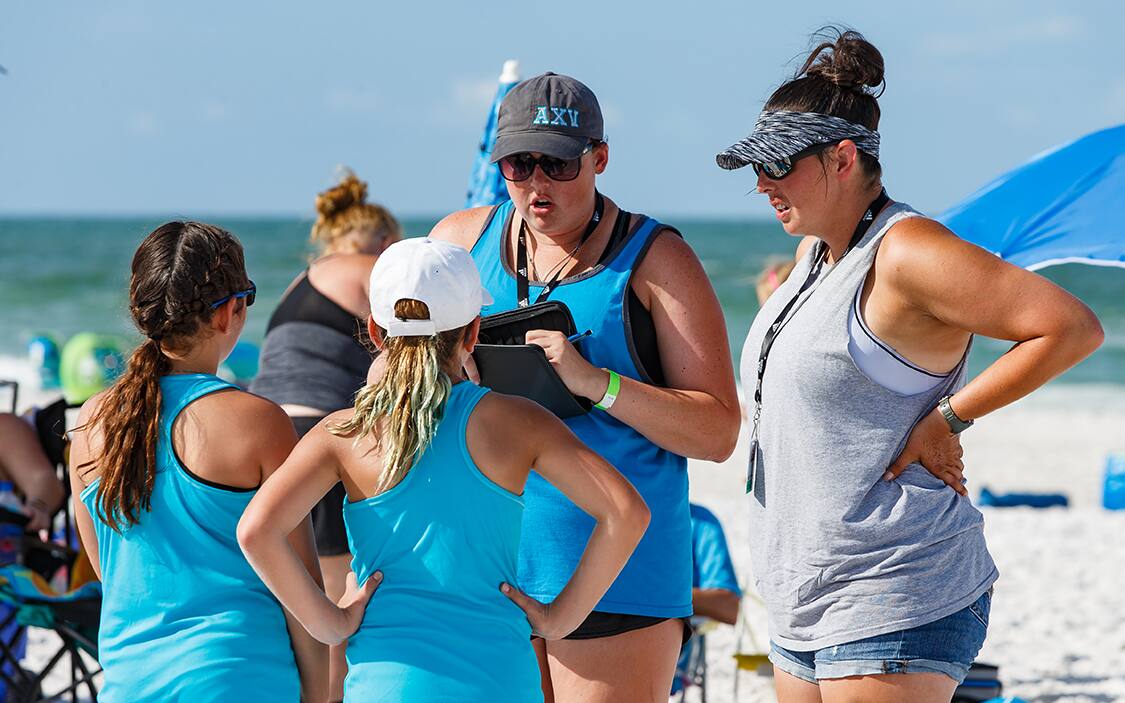
While teachers and parents have settled into homeschooling, as a coach, you may be feeling helpless and unsure of how you can support your athletes right now. It might be tempting to simply shut down the team for the season, but there are many ways to keep a team practicing and communicating so that when a return to sport happens, your team comes back stronger than ever.
Here, coaches and experts around the U.S. weigh in on how you can work with your team when in-person practices and games aren’t happening.
Host virtual practices
Sabrina Alimi, a lacrosse coach in New York City, N.Y, is still hosting virtual practices for her high school and youth league teams. There are plenty of easy ways to do this online, from Zoom to Google Hangouts to FaceTime. Her virtual practices don’t involve actual playing, but they’ll be invaluable for the girls when they’re back on the field—so much so that she and the other local coaches have decided to permanently continue hosting virtual practices in place of some in-person sessions, since they’re easier to organize and a great way to dig into smaller skills.
Alimi’s practices include a 10-minute warm-up and then she picks a sport-specific topic to dig into, such as defense, transitions, and team concepts that normally would get broken down on a whiteboard at a practice. Finally, she plays a video of an old game, pausing to talk with players about the tactics being used or what a player might be thinking.
Understand limitations
While you may live in an area where it’s easy to get out for a jog, not all your athletes will have the same options. “In NYC, our biggest problem is kids not being able to go outside and practice at all,” says Alimi. “Many kids on my high school team said their parents aren’t even letting them out for walks because of the risk.” If you’re recommending 30-minute runs four times a week, create alternative options for the athletes who can’t get outside to run. The same applies to backyard drills when some athletes live in apartment complexes.
Make sure everyone can participate
Remember that not every athlete will have access to great Wi-Fi, a computer, or even basic sporting equipment at home. You may need to help some team members by rounding up sporting equipment and even sourcing tablets and laptops if possible. Make it easy for athletes to approach you and let you know what they need in order to practice: Sometimes it’s as simple as dropping a soccer ball off at their doorstep, or asking the parents of your team members if anyone has an old smartphone they could loan out.
Create routines and structures
Scott Campsall, lead instructor at the Okami Kai martial arts studio in Ontario, has been offering all of the studio’s normal classes via Zoom, and even though kids are practicing at home, uniforms are still required. “We had them wear their uniforms from day one,” he says. This routine adds to the group dynamic and feeling of connection. If you don’t have a team uniform, ask athletes to show up wearing a certain color t-shirt, or find other ways to create a more team-like atmosphere.
Focus on previously underserved skills
This is a great chance to think about what skills often get ignored during a busy season. For example, most soccer practices focus on basic game play. But there are plenty of smaller skills around ball handling that can be practiced in a living room. And on the other side of the spectrum, there are strength and conditioning gains that can be made by having athletes incorporate new activities into their weekly routines.
Tristan Wenzig, a hockey coach in Pittsburgh, Pennsylvania, says that while his athletes normally only train on ice, the dry land training that they’re being forced to do will actually benefit them. “This is also the best time to work on stick handling, using a golf ball instead of a puck,” he says. “It builds your hand-eye coordination really fast!”
Let kids make their own decisions
Not everyone is going to want to participate and that’s fine right now, says Nadia Kyba, MSW, TrueSport Expert and President of Now What Facilitation. Don’t pressure athletes to participate in every session. Simply encourage any type of movement to keep them healthy – physically and mentally – until sports return.
“Literally any time moving is better than no time,” says researcher and clinical social worker Kathleen McIntyre. She recently headed a new study that showed regular exercise alleviates feelings of depression and anger.
Takeaway
Just because you can’t be face-to-face with your athletes doesn’t mean that you can’t continue to support their wellbeing and the future success of your team. These strategies will help ensure that your athletes are physically and mentally healthy when it’s time to return to sport.
TrueSport®, a movement powered by the experience and values of the U.S. Anti-Doping Agency, champions the positive values and life lessons learned through youth sport. TrueSport® inspires athletes, coaches, parents, and administrators to change the culture of youth sport through active engagement and thoughtful curriculum based on cornerstone lessons of sportsmanship, character-building, and clean and healthy performance, by creating leaders across communities through sport.
